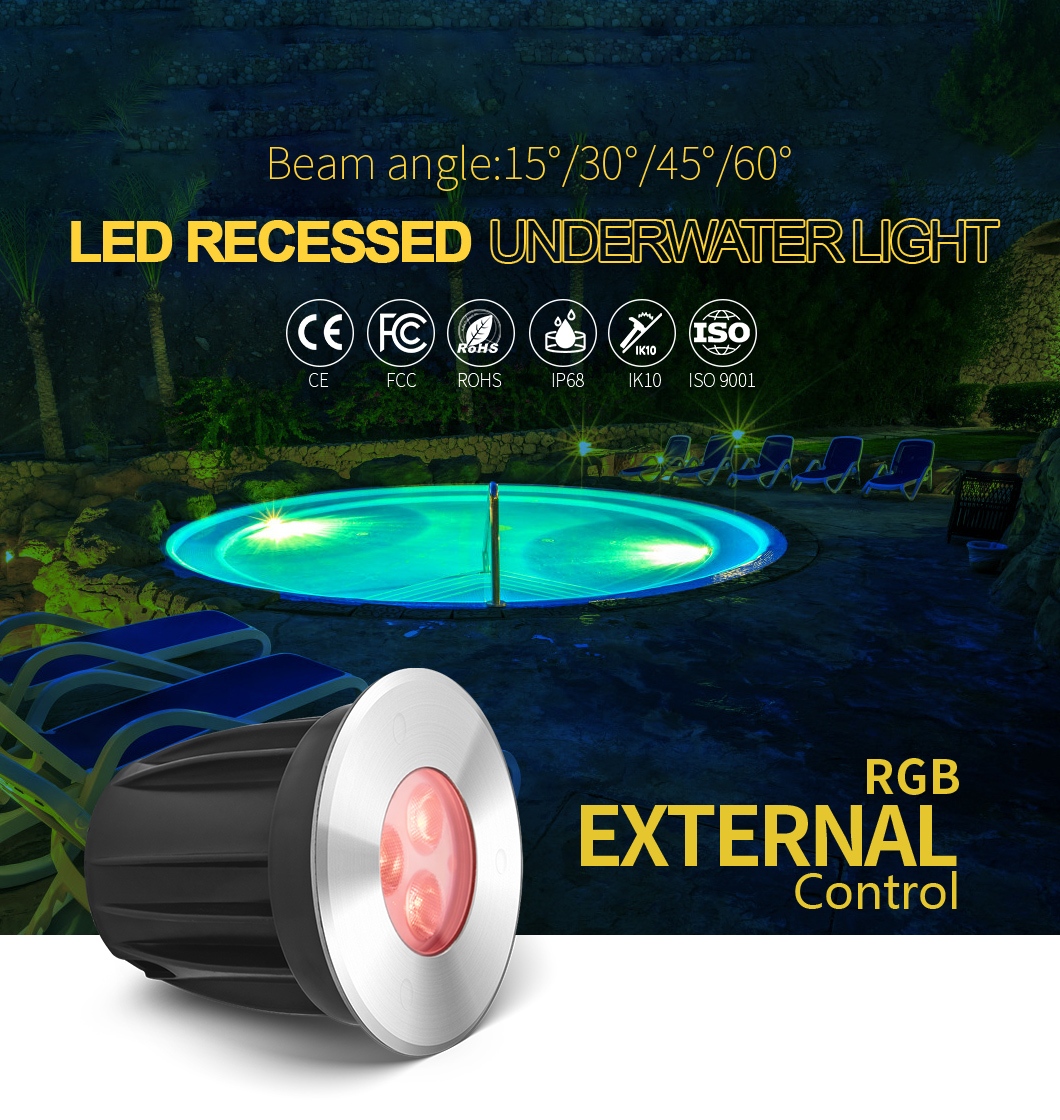3W low voltage landscape lighting is Suitable for outdoor landscape lighting
low voltage landscape lighting Key Features and Advantages:
1. The 12V/24V voltage is safe; even direct contact with the human body will not cause electric shock or injury.
2. Installation is flexible and simple, requiring no deep trenches or complex metal conduits. Wires can be directly and shallowly buried in soil, under mulch (wood chips), or laid along the edges of hardscape materials.
3. Modern low-voltage landscape lights generally use LED light sources, which are highly energy-efficient, consuming only 10%-20% of the power of traditional halogen lamps.
4. Multiple color temperatures (from warm yellow to cool white) and a high color rendering index better reproduce the true colors of plants and buildings.
low voltage landscape lighting Parameters:
|
Model |
HG-UL-3WSMD-RGB-R-X |
|||
|
Electrical |
Voltage |
DC24V |
||
|
Current |
130ma |
|||
|
Wattage |
3±1W |
|||
|
Optical |
LED chip |
SMD3535RGB(3 in 1)1WLED |
||
|
LED (PCS) |
3PCS |
|||
|
CCT |
R:620-630nm |
G:515-525nm |
B:460-470nm |
|
|
LUMEN |
90LM±10% |
|||
low voltage landscape lighting Structure size:
Low-Voltage Landscape Lighting FAQ:
1. Why are some of my lights brighter than others?
* Most common cause: Voltage drop. The lights furthest from the transformer have the lowest voltage, hence the dimmer lights.
* Solutions:
* Check if the main cable is thick enough (10 or 12 AWG pure copper wire is recommended).
* Divide the system into multiple circuits, ensuring each circuit is evenly loaded and not too long.
* Consider upgrading to a higher wattage transformer or a 24V system.
* Try “dual-ended power supply,” where power is supplied to a long circuit simultaneously from both outputs of the transformer.
2. What wattage transformer should I choose?
* Calculation formula: Total wattage of all lights ÷ 0.8 (i.e., leave a 20% margin).
* For example: If you have 10 5-watt lights, totaling 50 watts, then the transformer power should be at least 50W ÷ 0.8 = 62.5W. It is recommended to choose a transformer of at least 100W or 120W to allow for future additions of lighting fixtures.
3. What are the differences between LED lights and traditional halogen lamps?
* Energy Consumption: LED lights are more than 80% more energy efficient than halogen lamps.
* Lifespan: LED lights have a lifespan of 25,000-50,000 hours, far exceeding the 2,000-5,000 hours of halogen lamps.
* Heat: LED lights generate very little heat and will not burn plants or children.
* Cost: The initial purchase cost of LED lights is higher, but the long-term operating costs (electricity bills, replacement frequency) are much lower than those of halogen lamps.
4. Can I install low-voltage landscape lighting myself?
* Absolutely. This is a feasible project for most DIY enthusiasts. The key steps are:
1. Plan the layout and circuit of the lighting fixtures reasonably.
2. Choose a transformer with appropriate wattage and sufficiently thick cables.
3. Ensure that all wiring connections use waterproof connectors.
4. Install the transformer outdoors in a rainproof location and connect it to a GFCI socket with leakage protection.














